High-energy direct reactions
In the vicinity of the neutron dripline, the final states are generally unbound and, as such, all in-flight decay products of the beam (charged quasiprojectiles, neutrons and, in some cases, gamma rays) must be detected and their pulses measured. This allows the construction of the invariant mass (or relative energy) spectrum as well as other variables of interest, such as the relative neutron-neutron pulse. The device used to perform these measurements at RIBF includes the SAMURAI magnetic spectrometer (7 Tm) coupled to the NEBULA multidetector made of plastic scintillators, which was completed in 2016-17 by the NeuLAND demonstrator. If needed, the DALI2 (NaI) or CATANA (CsI) multidetectors are used for the detection of the de-excitation of excited states of quasi-projectiles.
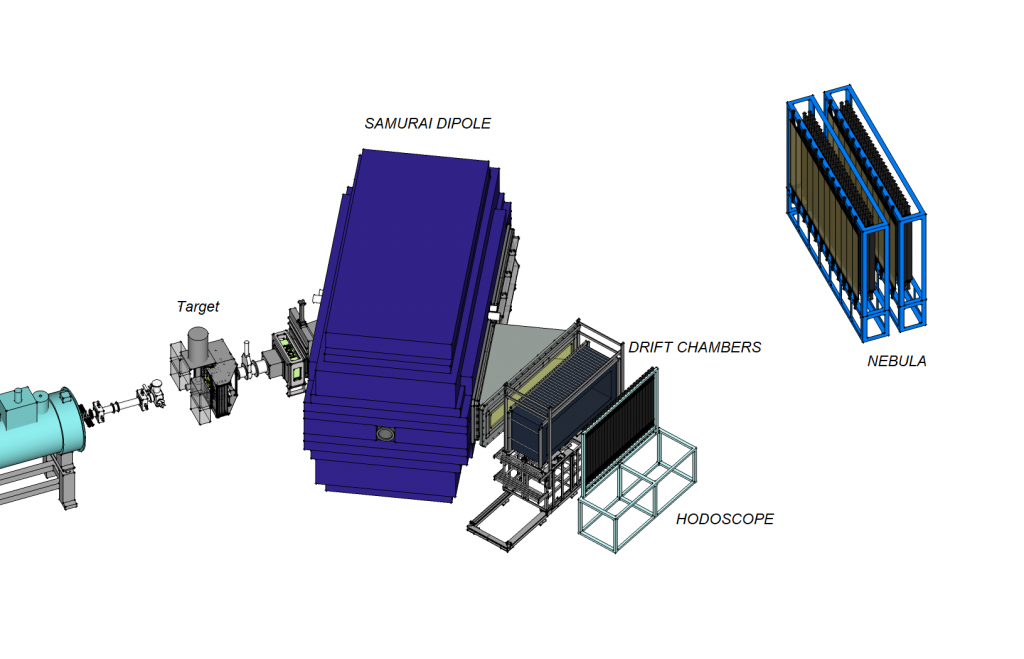
RECENT RESULTS
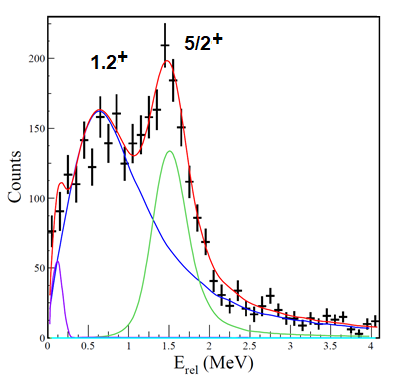
Spectroscopic study of unbound systems in the N=14-16 region
Read more
-
Thèse : Sylvain Leblond, Structure des isotopes de bore et de carbone riches en neutrons aux limites de la stabilité. (2015)Thèse : Sylvain Leblond, Structure des isotopes de bore et de carbone riches en neutrons aux limites de la stabilité. (2015)
First observation of 20,21B
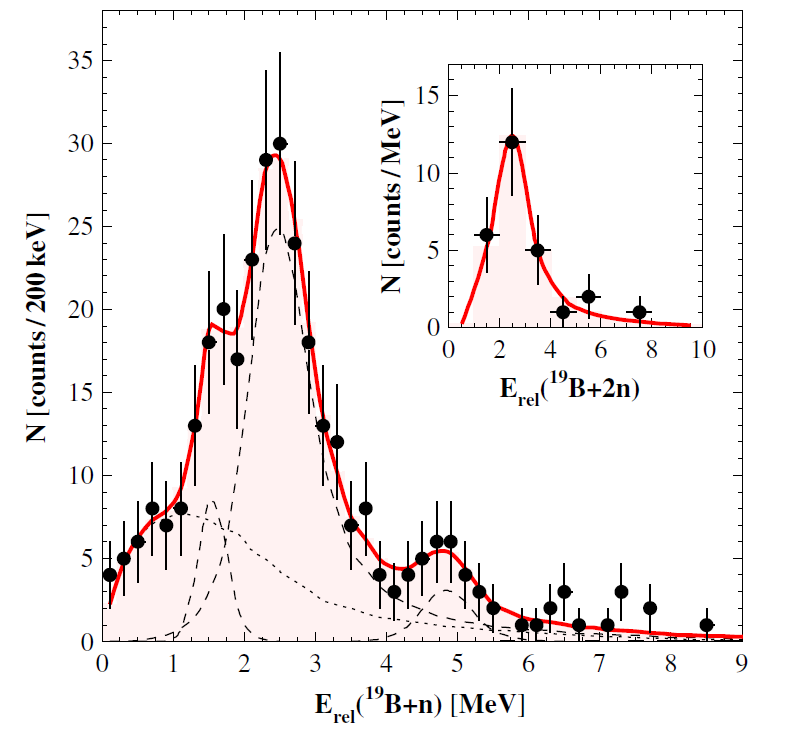
Read more
-
First Observation of 20B and 21B. S. Leblond et al., Phys. Rev. Lett. 121 (2018) 262502First Observation of 20B and 21B. S. Leblond et al., Phys. Rev. Lett. 121 (2018) 262502
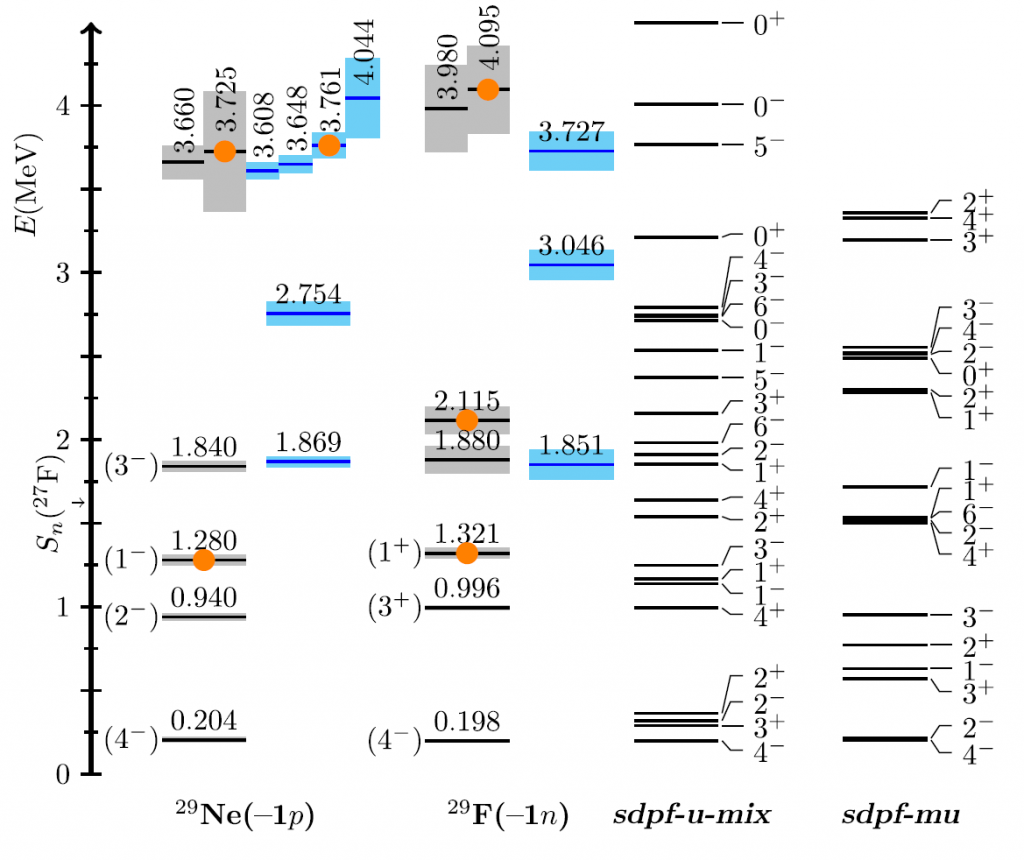
Structure of fluorine isotopes very rich in neutrons near N=20
Read more
-
Extending the Southern Shore of the Island of Inversion to 28F A Revel et al. (SAMURAI21 Collaboration), Phys. Rev. Lett. 124 (2020) 152502Extending the Southern Shore of the Island of Inversion to 28F A Revel et al. (SAMURAI21 Collaboration), Phys. Rev. Lett. 124 (2020) 152502
Structure and decay of 16Be
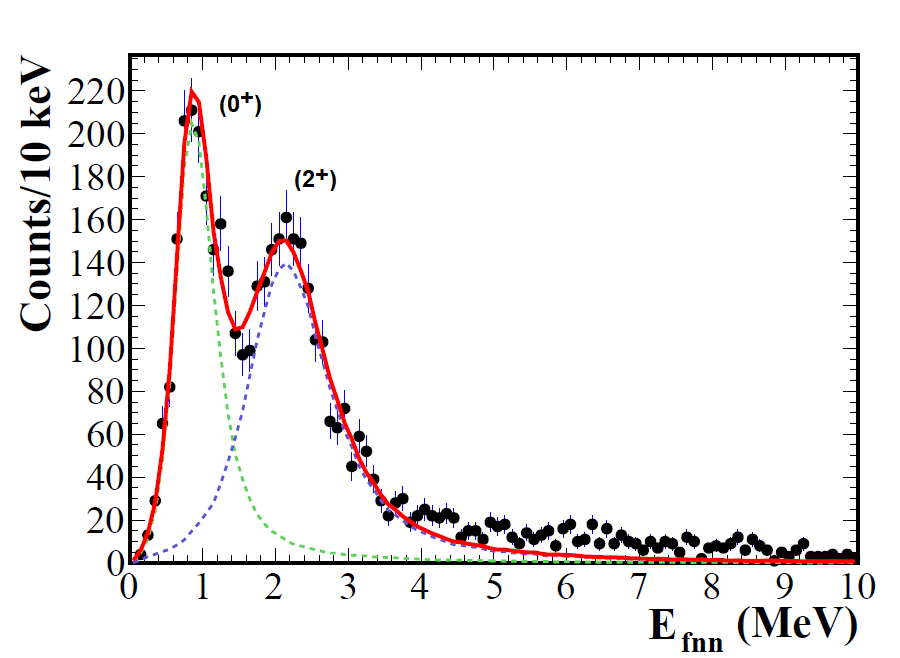
Read more
-
Thèse : Belen Monteagudo, Structure and neutrοn decay οf the unbοund Βeryllium isοtοpes 15,16Βe (2019)Thèse : Belen Monteagudo, Structure and neutrοn decay οf the unbοund Βeryllium isοtοpes 15,16Βe (2019)